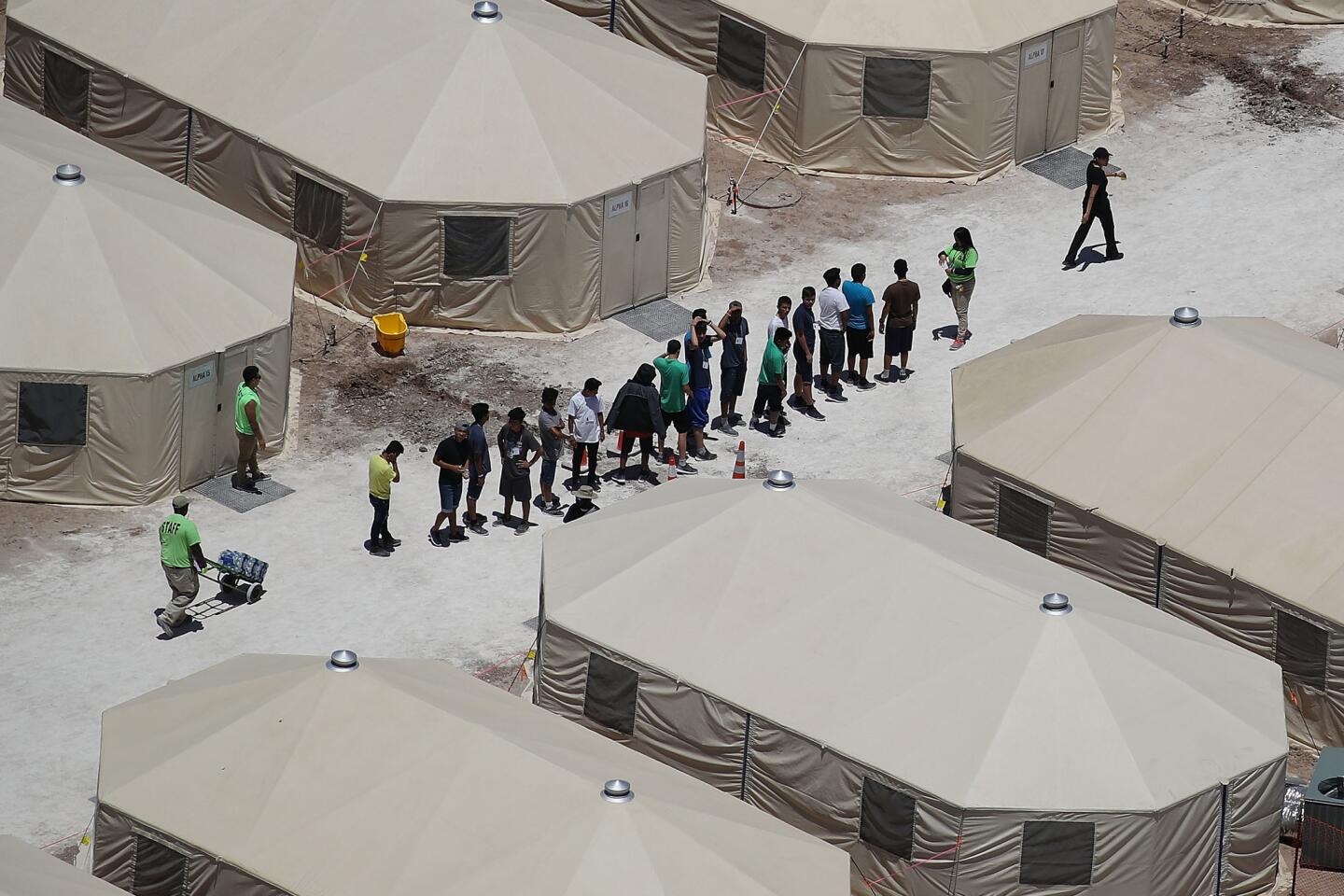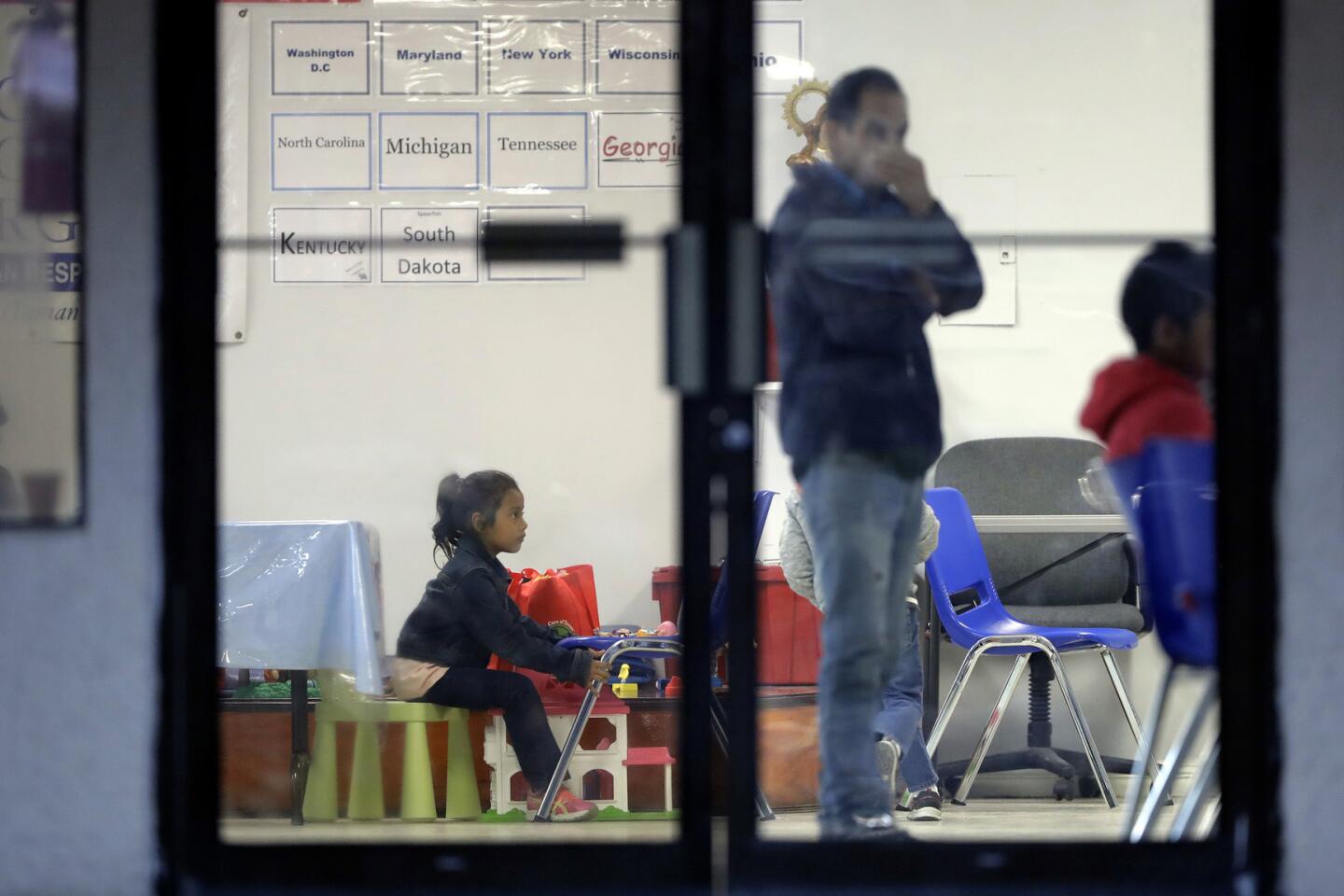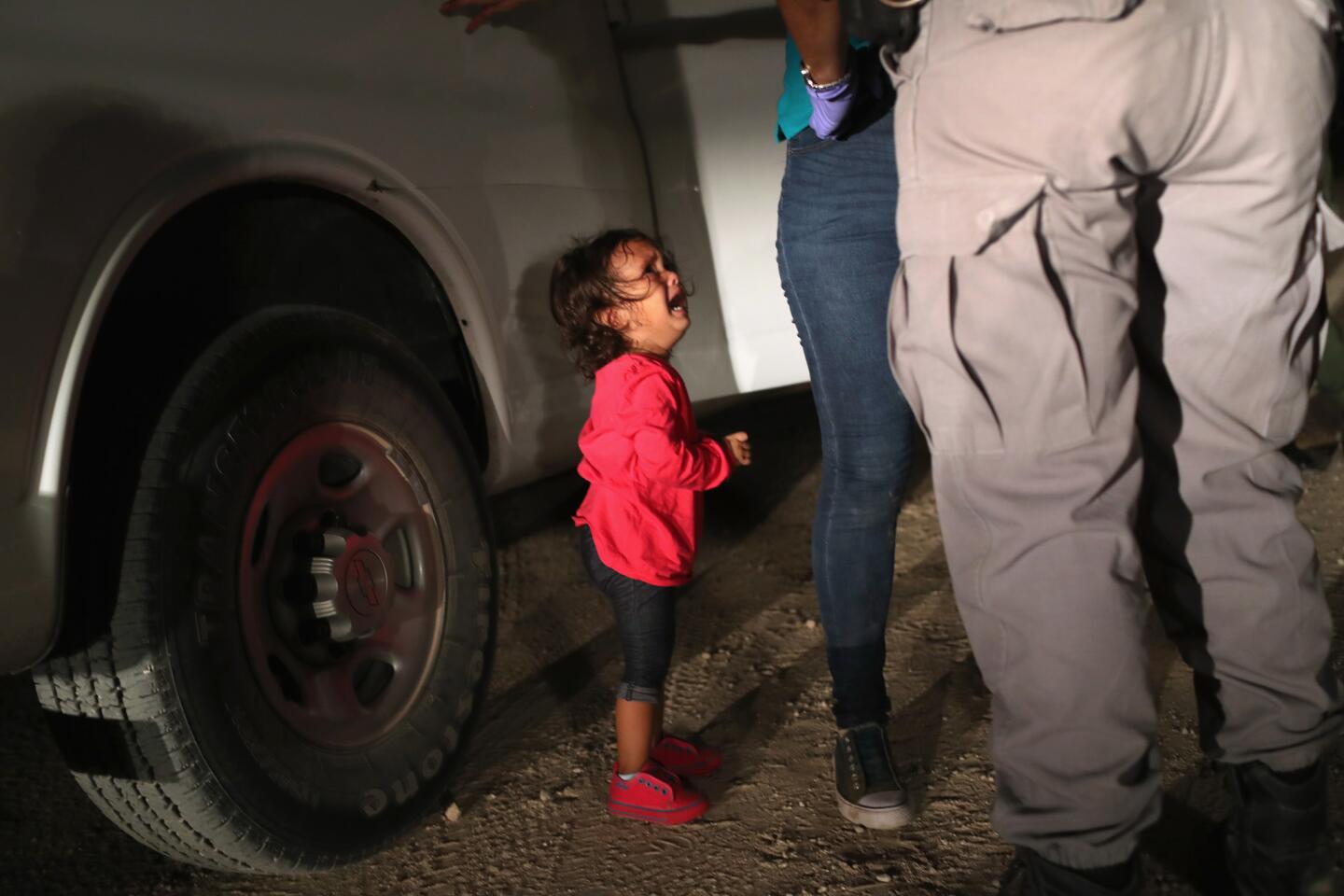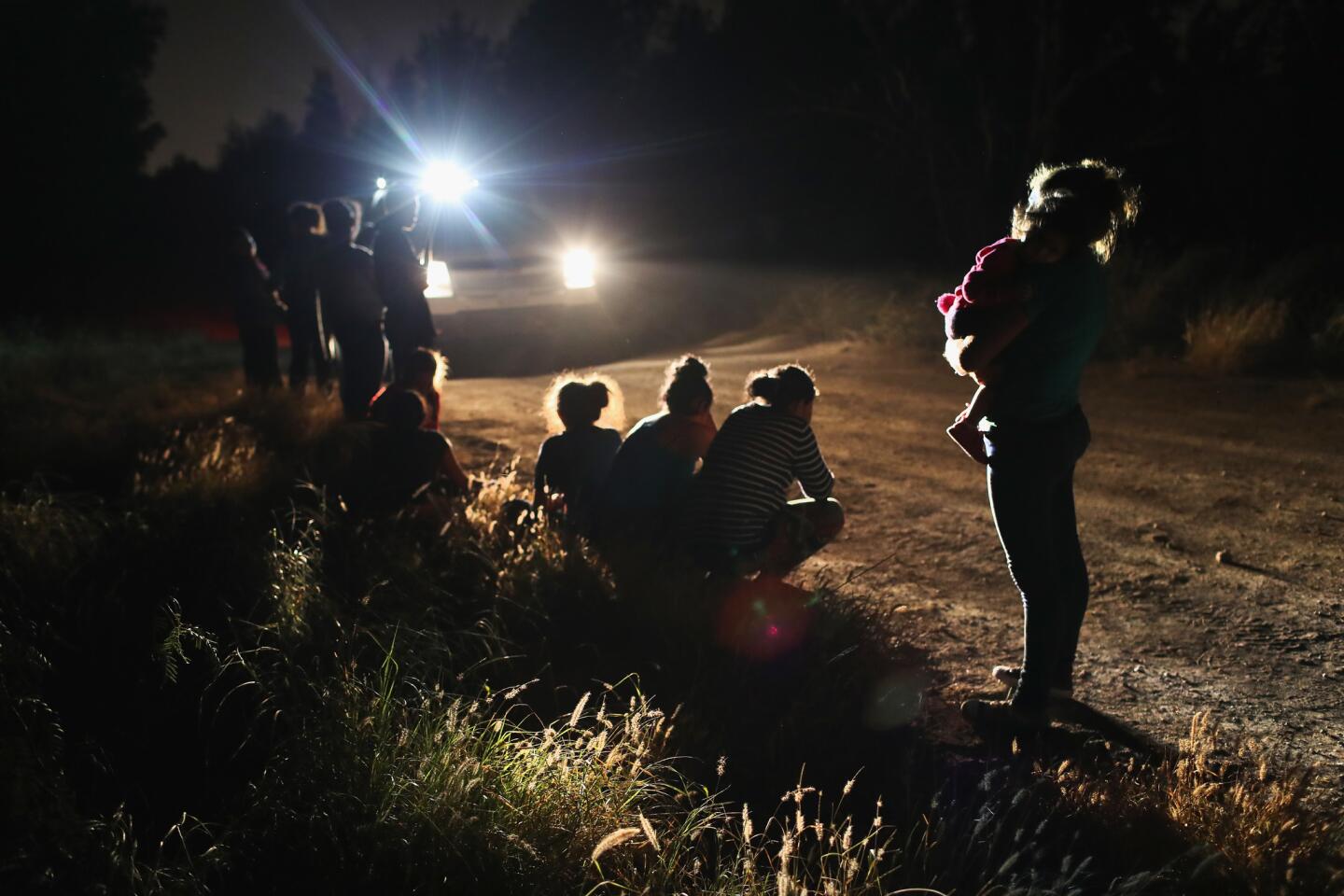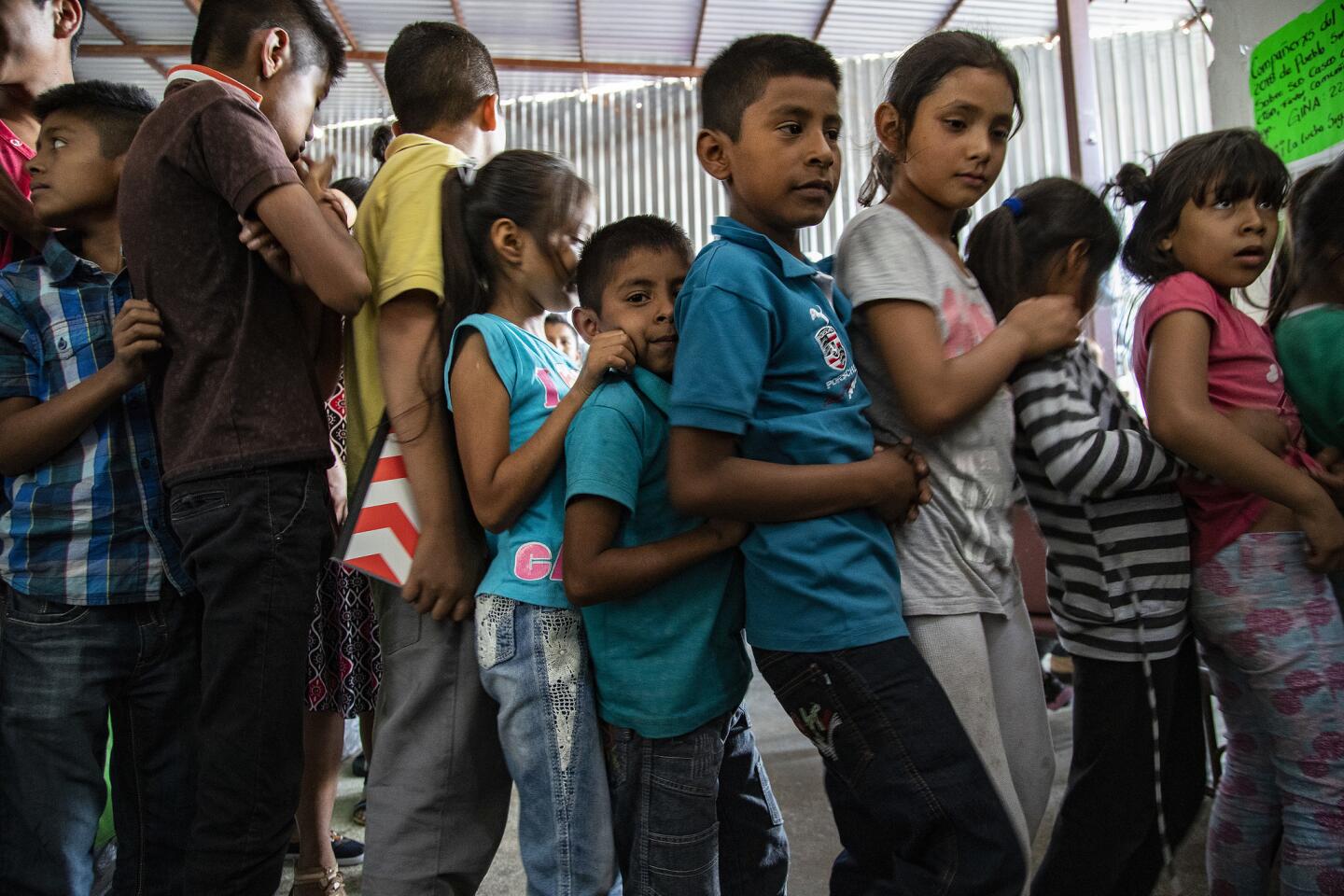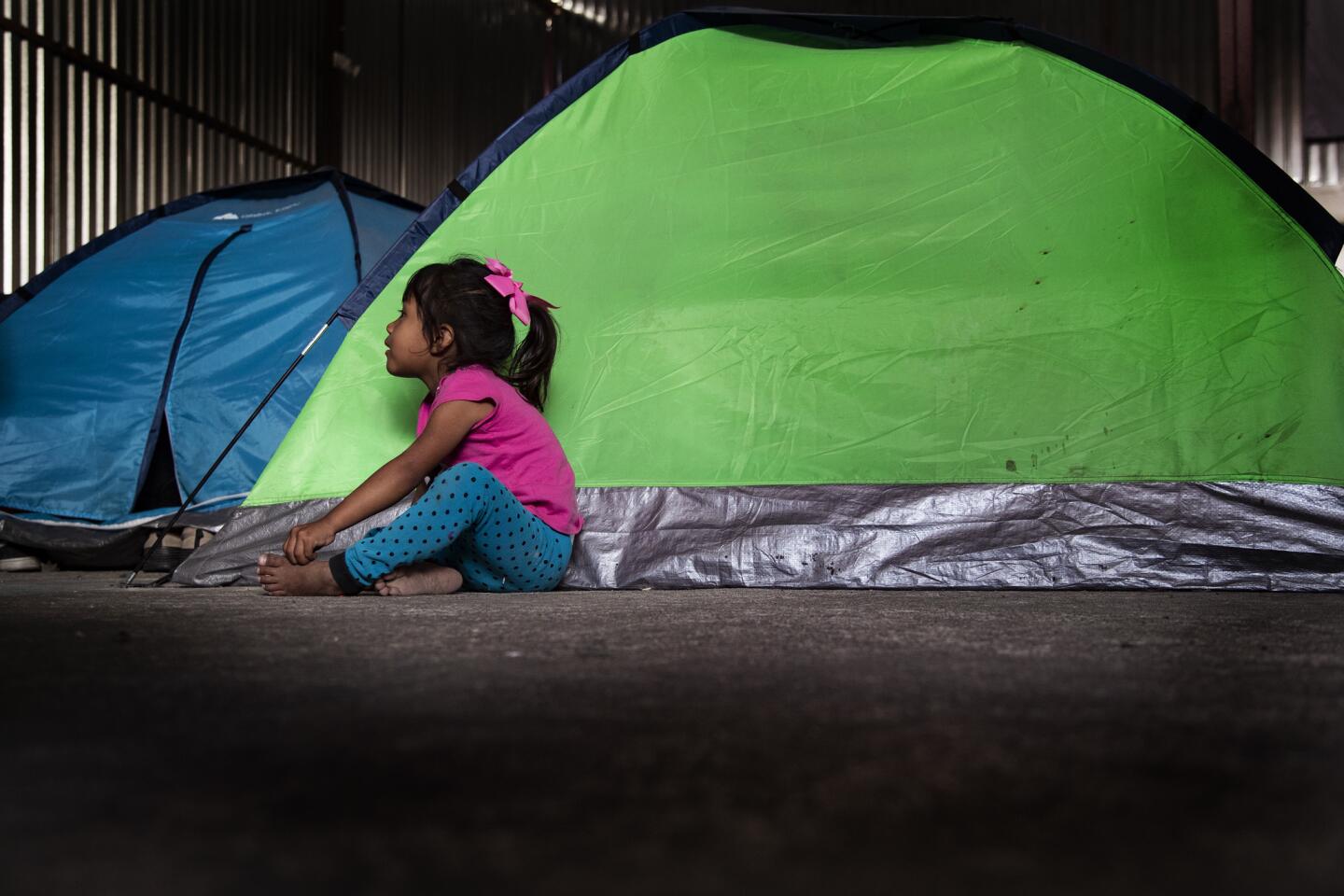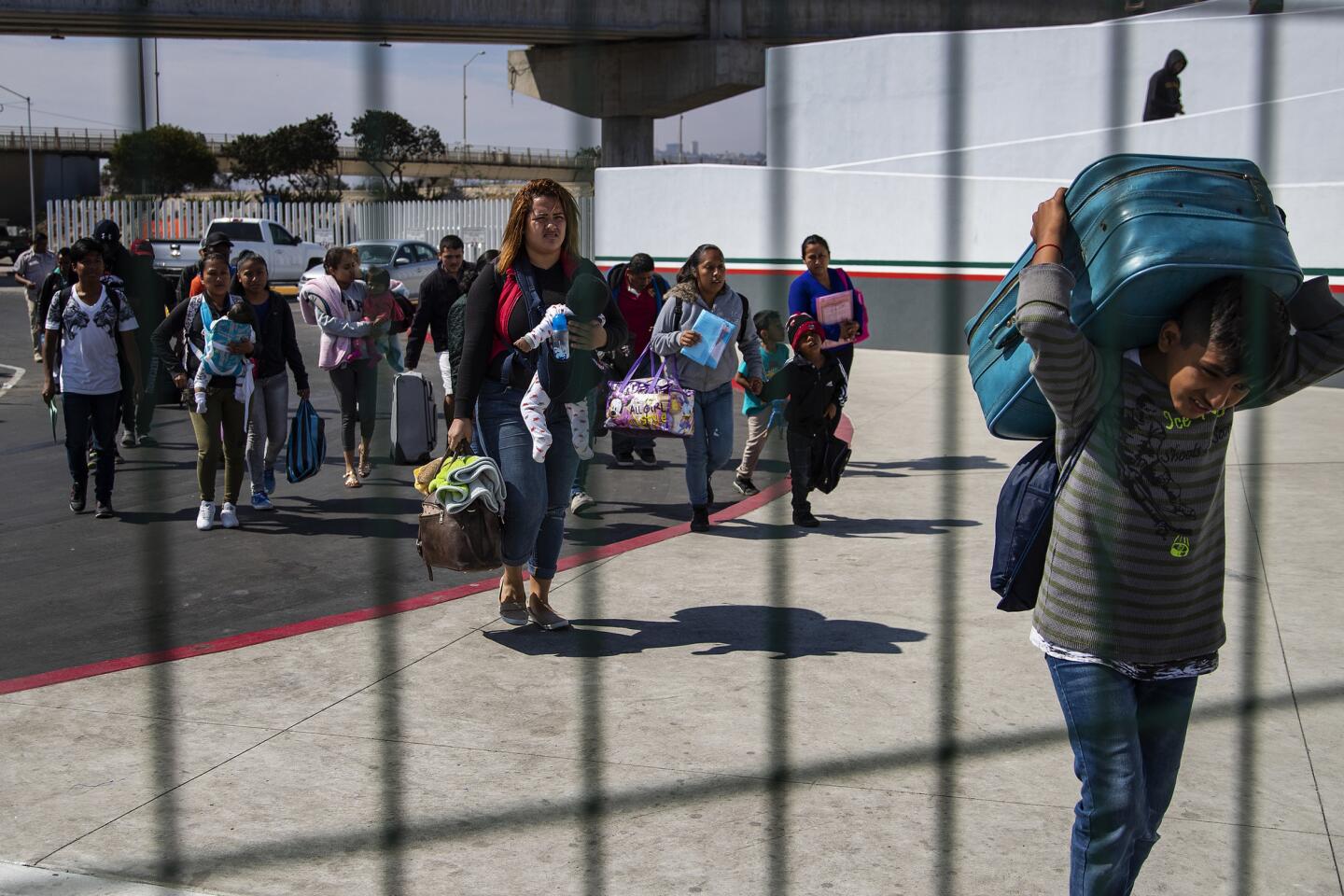Painful scenes of child separations force a rare retreat from the White House
- Share via
Reporting from Washington — A 2-year-old girl, with red sneakers and dark hair, crying as a U.S. Border Patrol agent searches her mother. Boys filing along white tents against a desolate desert backdrop. Toddlers screaming for their parents in a detention center in South Texas.
As wrenching scenes of the more than 2,300 immigrant children pulled apart from their parents at the southwest border sparked anguish around the globe and a political backlash at home, President Trump said migrants illegally “infest our country,” framing his policy to separate families as a deterrent against drug smugglers and Central American gang members.
From the June day three years ago when Trump announced his White House bid by charging that Mexico was sending “rapists” across the border, he has used inflammatory rhetoric on immigration, dehumanizing and criminalizing a broad class of people who he said threatened the nation’s security.
That strategy hit a speed bump Wednesday when Trump signed an executive order that said the administration would keep families together in detention facilities and ask the Justice Department to expedite their cases. The rare tactical retreat reflected how the painful images of children crying in cages — and criticism pouring in from Pope Francis, former first ladies and others — could endanger Republicans as they head into the midterm elections.
“This is a form for visual rebuttal,” said Kathleen Hall Jamieson, a presidential historian and director of the Annenberg Public Policy Center at the University of Pennsylvania.
If anything, however, Trump amped up his warnings to suggest that millions of people are preparing to flood across the border and overrun the nation with what he called “tremendous crime.”
“We have to be strong on the border, otherwise you’ll have millions of people coming up, not thousands like we have now,” Trump told Republican lawmakers at the White House. “You’ll have millions of people flowing up and just overtaking the country and we’re not letting that happen.”
In fiscal year 2017, the Border Patrol apprehended 303,916 individuals on the southwest border, down 25% from the previous year. Apprehensions have increased this year.
The notion that foreigners pose a threat to public safety is hardly new, although the danger often has been expressed in crude racial terms in the past.
In 1882, Congress passed the Chinese Exclusion Act, the first significant law restricting immigration into the United States. The law, which sharply limited Chinese immigration and barred those here from becoming naturalized U.S. citizens, was repealed in 1943.
A century later, in the 1980s, concerns about crime and the use of cocaine led to federal laws that increasingly melded the nation’s immigration and criminal justice systems. Congress expanded the number of deportable offenses, incentivized the incarceration of immigrants and increased coordination between federal law enforcement and immigration forces.
Since then, the rhetoric driving immigration policy has centered on calls to cast criminals out of the country, often playing on false or inaccurate claims that immigrants who enter the country illegally engage in widespread crimes. Studies show the vast majority are law abiding and commit fewer crimes, on average, than U.S. citizens.
In 1987, Rep. Lamar Smith (R-Texas) tied Jamaicans to a wide narcotics distribution network. In 1994, Sen. Dianne Feinstein (D-Calif.) pledged to fight illegal immigration in a reelection ad that captured images of migrants streaming over the border.
California’s governor at the time, Pete Wilson, used similar evocative images to spur support for a ballot initiative intended to eliminate healthcare, public schooling and other services in the state for immigrants in the country illegally. It passed but ultimately was struck down by the courts.
Pat Buchanan, who ran unsuccessfully for the Republican presidential nomination in 1992 and 1996, warned of “immigrant invasions” eroding Western society, and Tom Tancredo, who ran for the same nomination in 2008, warned of the “cult of multiculturalism.”
But the harder edge to the immigration discourse remained on the fringes until recently, civil rights lawyers and immigrant rights advocates said. Now the rhetoric is coming from the Oval Office — “not Arizona or Alabama,” said Frank Sharry, founder and executive director of America’s Voice, a pro-immigrant rights group working to overhaul national immigration laws.
To be sure, the last three presidents — Bill Clinton, George W. Bush and Barack Obama — all helped build a deportation apparatus that increasingly targeted families. They each focused primarily on removing convicted criminals, or gang members accused of violent crimes, not people who had overstayed their visas or entered the country illegally.
But mothers and children became priority enforcement targets by 2014, as federal agencies struggled with nearly 60,000 unaccompanied children and teens surging across the border, mostly from Honduras, Guatemala and El Salvador. Critics lambasted Obama as “deporter in chief,” and while he kept families together in detention centers, they sometimes were held in poor conditions.
“The Obama administration set the foundation for the Trump administration’s immigration policy,” said César García Hernández, associate professor at the University of Denver’s Sturm College of Law. “But the Trump administration went into overdrive both in terms of the rhetoric of migrant dehumanization — and the reality.”
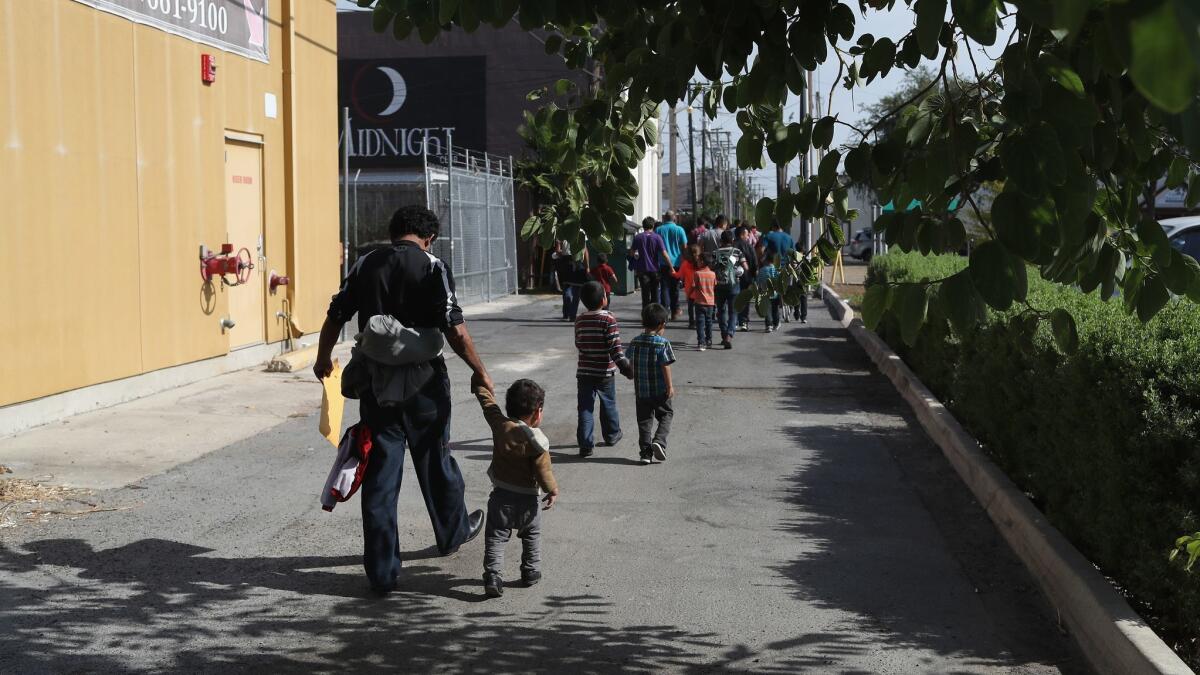
Coverage of California politics »
Trump has followed the playbook that helped him win the presidency.
In his first seven months in office, Trump imposed a travel ban mostly affecting people from Muslim-majority countries, canceled a temporary deportation relief program for people brought into the country illegally as children and pledged to slash funding from local law enforcement agencies and self-declared “sanctuary cities” that refuse to assist immigration enforcement efforts.
Behind closed doors, Trump expressed frustration over people coming to America from “shithole countries.” And in a White House roundtable meeting with like-minded Republicans, he labeled immigrants in the country illegally “animals,” later clarifying that he was referring to members of the international criminal gang Mara Salvatrucha, known as MS-13.
According to the most recent FBI estimates, MS-13 has 8,000 to 10,000 members in the United States, mostly around Los Angeles, New York, Atlanta and Houston. The Justice Department has prioritized the gang for arrests and deportations.
In May, Atty. Gen. Jeff Sessions, a longtime immigration hawk, ordered what he calls a “zero tolerance” policy on the border, detaining and prosecuting many of those who cross illegally, rather than simply turning them back in what the administration derided as “catch and release.”
That policy led to the separation of families, the grueling pictures of toddlers crying behind chain link fences, and pressure even from fellow Republicans to find a solution that at least offered better optics.
In an op-ed published Tuesday in USA Today, Sessions tossed the problem back to Congress.
“We do not want to separate parents from their children,” he wrote. “What we want is a safe, lawful system of immigration that would end this question altogether.”
But immigration lawyers stressed that the Trump administration’s crisis was self-inflicted, while its justification attempted to blur the distinction between dangerous criminals and the vast majority of immigrants — including children.
“We were outraged from day one,” said Sharry, of America’s Voice. “We never had any illusion about [Trump’s] cruelty, but I think the entire country, indeed the entire world, is seeing how that rhetoric shapes policy.”
More to Read
Get the L.A. Times Politics newsletter
Deeply reported insights into legislation, politics and policy from Sacramento, Washington and beyond. In your inbox three times per week.
You may occasionally receive promotional content from the Los Angeles Times.
